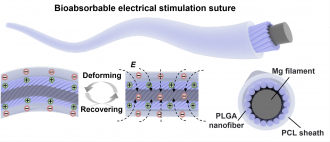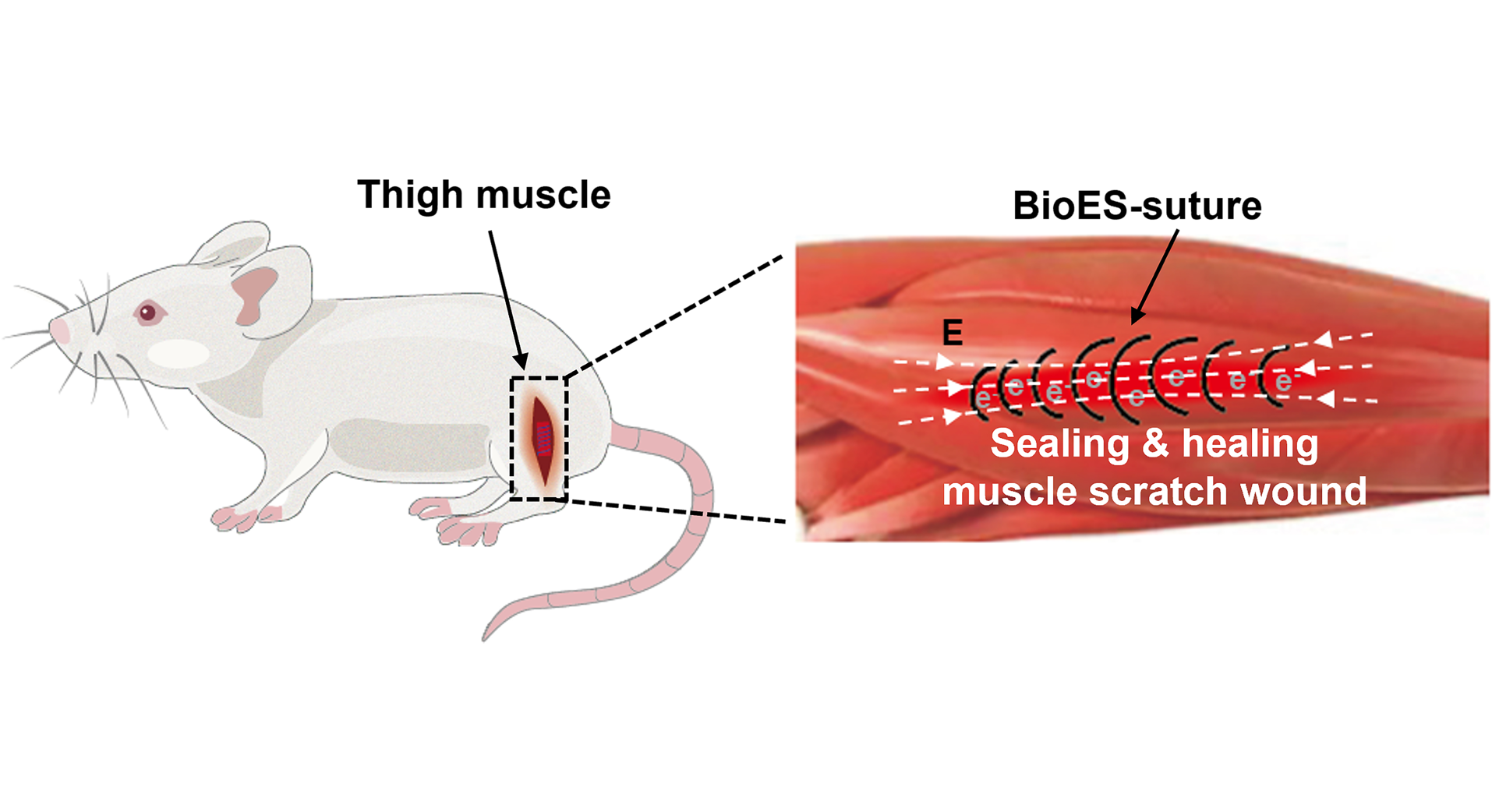Media release
From:
Biotechnology: Electrical stitches promote wound healing in rats *IMAGES*
Surgical stitches that can generate electrical charge could help speed up the healing of wounds, according to a study published in Nature Communications. The stitches were shown to be effective in treating wounds in rats and could provide a cost-effective alternative to traditional sutures.
Deep wounds from surgeries or injuries are commonly treated with sutures to hold the tissue together while the skin repairs. Whilst they are safe, inexpensive, easy to apply from trained personnel, and effective in promoting healing and avoiding infections, daily movements may cause strain that reduces their efficacy. Recent research has shown that electrical stimulation in sutures can promote healing by stimulating cell proliferation and migration to the affected area. However, existing technologies require an external battery and are limited by being bulky and expensive.
Hongzhi Wang and colleagues developed a mechano-electrical conversion fibre made of a material that passively produces an electric charge when contact-separation occurs between the core and sheath layers of the electrical stitches via movement. Through this mechanism, movements that can hamper the efficacy of the sutures are instead harnessed to produce electric fields that can speed up wound healing. Laboratory models were used to test the effectiveness of the stitches to improve healing speed. After 24 hours, an original wound area of 69% reduced to approximately 10.8% with electrical sutures, compared to 32.6% in the control group (traditional sutures). Compared to the control, the electrical suture group showed faster migration of fibroblasts (cells that help form connective tissue) to the wound, which is indicative of stimulated healing. The stitches were then tested in rats, demonstrating improved tissue migration and sped up wound regeneration compared to control groups, achieving close to complete healing after 10 days. Finally, investigations into antimicrobial properties showed that, even without daily wound disinfection, bacterial count remained low in rats treated with the electrical suture, suggesting that the stitches could potentially reduce post-operative infections.
Tests in clinical settings would be needed to assess the efficacy of these sutures in humans, however, if successful they could be a safe, cheap, and effective alternative to traditional stitches.
Multimedia






 International
International



